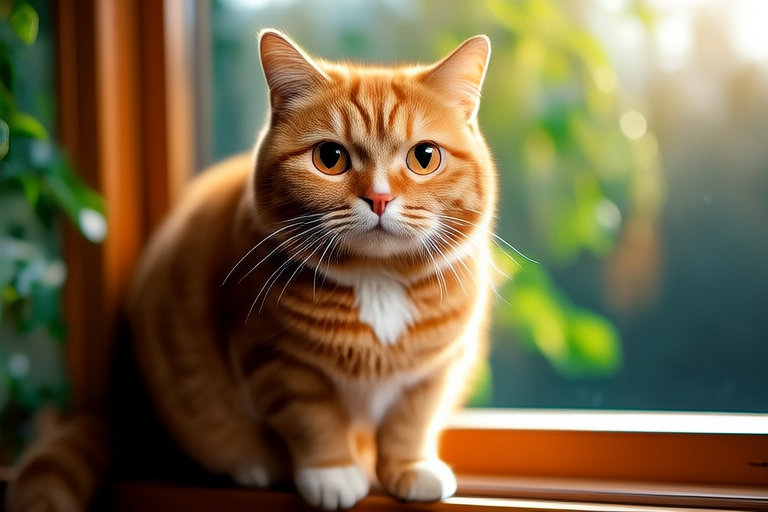Orange Cats Rule the Web: Here’s Why They’re Irresistible
Welcome to the world of orange cats, where these feline friends have taken over the internet with their captivating presence and charming personalities. From social media platforms to viral videos, orange cats are everywhere you look. But why are they so popular? What makes them stand out from other cat breeds? Let’s dive into the fascinating world of orange cats and uncover the reasons behind their irresistible allure.
The Prevalence of Orange Cats Online
If you’ve ever scrolled through your social media feeds, chances are you’ve come across numerous posts featuring orange cats. These images and videos showcase everything from playful antics to serene moments of companionship. The internet is flooded with memes, photos, and stories about orange cats, making them one of the most recognizable and beloved feline figures online. Their ubiquity can be attributed to their striking appearance, endearing personalities, and the ease with which they capture attention.
Potential Reasons for Their Popularity
Physical Traits
One of the primary reasons for the popularity of orange cats is their distinctive coloring. Orange cats, also known as ginger or marmalade cats, typically have a coat that ranges from light cream to deep reddish-brown. This vibrant hue sets them apart visually, making them instantly recognizable. Their coats often feature patterns such as stripes, spots, or solid color, adding to their unique appearance. The contrast between their fur and green or blue eyes further enhances their striking looks.
Temperament
In addition to their striking appearance, orange cats are often praised for their friendly and outgoing personalities. Many owners report that orange cats tend to be more sociable and affectionate compared to other breeds. They are known for their playful nature and love for interaction, making them ideal companions for families and individuals alike. Their gentle demeanor and willingness to engage in games or cuddle sessions make them perfect for households with children or other pets.
Cultural Significance
The fascination with orange cats extends beyond their physical attributes and temperament; it also has roots in cultural significance. Throughout history, orange cats have been featured in various forms of art, literature, and folklore. In many cultures, orange cats are associated with good luck and prosperity. For instance, in Japan, Maneki-neko, the famous “beckoning cat” statue, is often depicted as an orange cat. This cultural symbolism has contributed to the enduring appeal of orange cats in different parts of the world.
Scientific Insights on Cat Colors and Genetics
To understand the prevalence of orange cats, we must delve into the realm of genetics. The color of a cat’s fur is determined by the presence of pigments called melanin. In the case of orange cats, the responsible gene is the orange gene, also known as the O gene. This gene is located on the X chromosome, which means that it is inherited differently in males and females. Males have one X and one Y chromosome, while females have two X chromosomes. As a result, male cats can only express the orange color if they inherit the O gene from their mother, while female cats need to inherit two copies of the O gene (one from each parent) to display the orange color.
The O gene is dominant over the non-orange gene, meaning that even if a cat inherits one copy of the O gene, it will still exhibit the orange color. This genetic factor explains why orange cats are relatively common among domesticated breeds. Additionally, the O gene does not affect the cat’s overall health or behavior, ensuring that orange cats remain as healthy and lively as any other breed.
Relatable Stories and Anecdotes
Many cat enthusiasts have shared heartwarming stories about their orange feline companions, illustrating the irresistible charm of these cats. One such story comes from Sarah, a devoted pet owner who adopted an orange tabby named Whiskers. Despite initial reservations, Sarah quickly fell in love with Whiskers’ playful spirit and unwavering loyalty. “Whiskers is always the first to greet me when I come home,” she says. “He follows me around the house, purring contentedly and seeking out my attention. He’s truly a source of joy in my life.”
Another example is Tom, who recently posted a video of his orange cat, Boots, playing fetch. The video went viral, garnering thousands of likes and shares from viewers impressed by Boots’ enthusiasm and agility. “I never expected Boots to enjoy playing fetch like a dog,” Tom remarks. “But he’s always up for a game, and it’s become our favorite bonding activity. His playful nature never fails to bring a smile to my face.”
Conclusion: The Unique Appeal of Orange Cats
In conclusion, orange cats have captured the hearts of millions thanks to their striking appearance, friendly personalities, and rich cultural significance. Their prevalence online is a testament to their universal appeal, and the scientific insights into cat genetics provide a deeper understanding of why these felines are so common. Whether it’s their playful antics, loving natures, or simply their striking appearance, orange cats continue to enchant people around the world.
Positive feedback from cat enthusiasts online further supports the unique appeal of these felines. Many owners praise their orange companions for their affectionate and sociable behaviors, making them ideal pets for families and individuals alike. As we continue to celebrate the charm of orange cats, let us remember the joy they bring into our lives and the special place they hold in our hearts.
